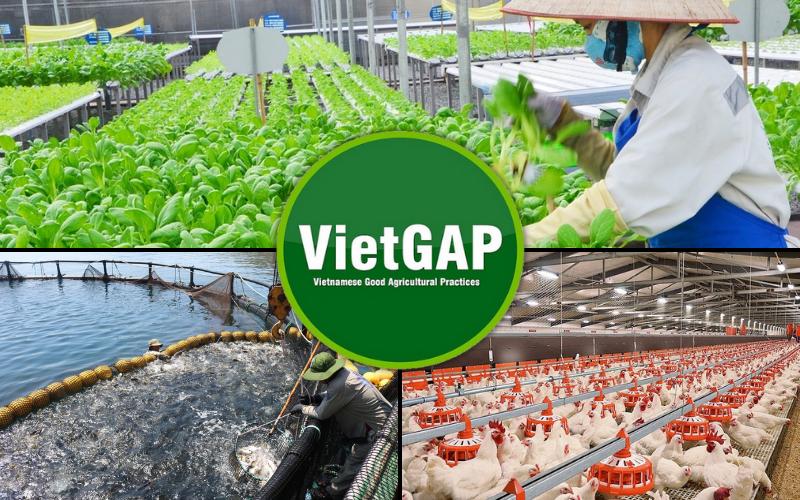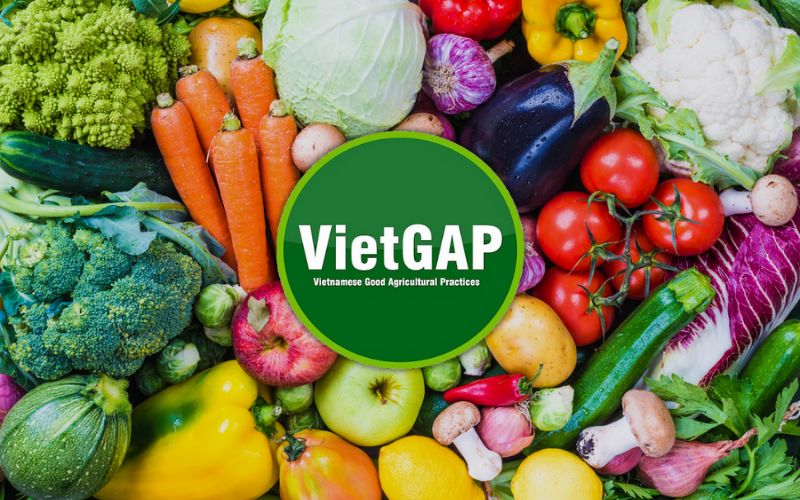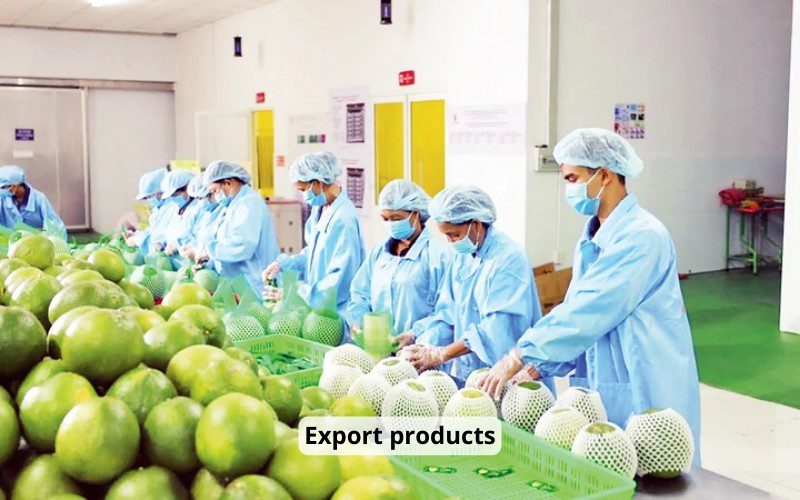If you are in the F&B industry, you have probably heard the term ‘VietGAP standards’ many times. However, do you fully understand the meaning of this term? What is the role of VietGAP in cultivation and animal husbandry? Let’s explore in detail what VietGAP is in the following article with Kamereo!

What is VietGAP?
VietGAP is an abbreviation for Vietnamese Good Agricultural Practices. It is a set of standards/regulations governing safe and sustainable agricultural production practices for agricultural products such as cultivation, animal husbandry, and aquaculture in Vietnam.
VietGAP standards include principles, procedures, and guidelines for organizations/individuals participating in production, harvesting, and processing. This is to ensure safety and improve product quality. Additionally, VietGAP aims to protect social welfare, the health of workers/consumers, as well as the environment and product traceability.
The standards of VietGAP are developed based on Vietnamese legislation including the Food Safety Law, Standards and Technical Regulations Law, Environmental Protection Law, Water Resources Law, and guidelines from the FAO. Moreover, VietGAP also relies on international standards such as AseanGAP, GlobalGAP, EurepGAP, and HACCP.

Areas of production applying VietGAP
VietGAP standards are applied to many fields of agricultural production including:
- VietGAP cultivation: fresh vegetables, fresh tea buds, rice, coffee, cashews, pepper, etc.
- VietGAP in animal husbandry: dairy cows, beef cattle, goats, pigs, chickens, ducks, geese, bees, etc.
- VietGAP aquaculture: tra catfish, tilapia, vannamei shrimp, whiteleg shrimp, etc.
Moreover, VietGAP can also be applied to other sectors such as mushroom production, seedlings, organic fertilizers, or biopesticides.
Criteria for evaluating businesses achieving VietGAP certification
VietGAP standards are built based on the following criteria:
- Safety: Products must ensure the health safety of consumers, free from harmful chemical residues, heavy metals, and microorganisms exceeding permitted limits.
- Quality: Products must meet high-quality standards, including sensory, taste, nutritional, and other quality requirements as stipulated by the law.
- Sustainability: Production activities must be accompanied by environmental protection, efficient use of natural resources and energy.
- Traceability: Consumers can trace the origin of products, information about the production, harvesting, and post-harvest processing.

12 VietGAP standards in cultivation:
VietGAP standards are specified in TCVN 11892-1:2027. Here are the main contents in cultivation for your reference:
- Assessment and selection of production areas: Based on ecological conditions, climate, and soil fertility to ensure optimal crop growth and product safety.
- Seeds and grafts: Use seeds with clear origins, good quality, suitable for ecological conditions of the production area.
- Soil and substrate management: Use fertilized soil, apply rational cultivation methods to protect soil, limit erosion, and soil degradation.
- Fertilizers and additives: Use according to the 4 correct principles (correct type – correct time – correct manner – correct dosage). Also, prioritize the use of organic fertilizers and microbial fertilizers.
- Irrigation water for crops: Use irrigation water that meets hygiene standards, irrigate crops according to their needs, avoiding over or under irrigation.
- Chemicals: Use chemicals including inorganic fertilizers and plant protection products according to the 4 correct principles, prioritize the use of bio-based plant protection products.
- Harvesting and post-harvest processing: Harvest products at the right time, post-harvest processing to ensure food safety.
- Waste management: Collect and handle waste properly, avoiding environmental pollution.
- Record keeping: Record all information about the production, harvesting, and post-harvest processing process for product traceability.
- Working conditions and personal hygiene: Ensure labor safety for producers, including providing personal protective equipment, training on occupational safety, and regular health care.
- Complaints and dispute resolution: Regulations for receiving, handling, and responding to complaints related to products and the rights of workers (keep records if any).
- Internal audit: Organize audits according to the minimum requirements of VietGAP cultivation at least once a year. When problems are detected, analyze and take corrective action before delivery to customers within a maximum of 3 months (depending on the content of non-compliance points).

In addition to the above 12 cultivation standards, VietGAP also has specific standards for each type of crop and livestock. Applying VietGAP standards helps improve the quality of agricultural products, ensure food safety, protect the environment, and consumer health.
Steps for VietGAP certification:
The specific steps and procedures for obtaining VietGAP certification may vary depending on the certifying body. Producers should directly contact the relevant agency for specific guidance. Below are the basic steps to obtain VietGAP certification:
Step 1: Submitting registration documents
Organizations or individuals wishing to obtain VietGAP certification need to submit registration documents to the certifying body. Registration documents include: information about the producing organization or individual, production area, products for certification, and commitment to comply with VietGAP standards.

Step 2: Practical assessment
After receiving the registration documents, the certifying body will send officials for on-site evaluation of the production conditions of the registering organization or individual. The content of on-site evaluation includes:
- Evaluation of production area conditions.
- Infrastructure.
- Crop varieties, livestock.
- Chemical use.
- Record-keeping.
- Worker safety, health, and welfare.
- Pest management.
Step 3: Processing assessment results
After completing the on-site evaluation, the certifying body will summarize the results and make a decision to grant or not grant VietGAP certification. If the registering organization or individual meets the requirements of VietGAP standards, the certifying body will issue VietGAP certification. In cases where the requirements of VietGAP standards are not met, the certifying body will notify the reasons and request corrective action.

Step 4: Maintaining certification
After being granted VietGAP certification, the producing organization or individual must maintain compliance with VietGAP standards. The certifying body will conduct periodic inspections to assess compliance with the standards. If the organization or individual fails to maintain compliance with VietGAP requirements, the certifying body may revoke the certification.
What are the benefits of achieving VietGAP certification?
Currently, VietGAP standards serve as a guiding principle for businesses in the production sector. Below are the benefits of meeting these standards:
Enhancing product quality
Implementing VietGAP standards helps businesses better control the production process, thereby improving product quality and ensuring food safety. Products certified with VietGAP build trust with consumers, enabling businesses to enhance competitiveness in the market.

Increasing production efficiency
Applying VietGAP helps businesses use raw materials more efficiently and minimize waste, leading to increased production efficiency and reduced investment costs. VietGAP also helps businesses enhance labor productivity and improve the working environment.
Expanding market access
Products certified with VietGAP can easily access demanding markets, especially for export. This certification also helps businesses enhance brand reputation, contributing to building a reputable and responsible image within the community.

Accessing support programs
Businesses applying VietGAP may benefit from various government support programs, such as capital, technical assistance, technology, and trade promotion. Additionally, non-governmental organizations and international organizations offer many support programs for businesses applying these standards in production.
Enhancing social responsibility
Applying VietGAP demonstrates the business’s responsibility to the community and the environment. Therefore, businesses with VietGAP certification contribute to environmental protection by minimizing the negative impacts of production activities on the environment.

Frequently Asked Questions
In addition to the above information about VietGAP, many manufacturing businesses have the following questions:
How long is VietGAP certification valid for?
Based on Point a, Clause 1, Article 17 of Circular 48/2012/TT-BNNPTNT and Point 2, Article 2 of Circular 06/2018/TT-BNNPTNT, VietGAP certification is valid for a maximum of 2 (two) years from the date of issuance.
Can VietGAP certification be extended after it expires?
Based on Point b, Clause 1, Article 17 of Circular 48/2012/TT-BNNPTNT and Point 2, Article 2 of Circular 06/2018/TT-BNNPTNT, VietGAP certification can be extended for a maximum of 3 (three) months for cases where the production facility has been granted certification but does not reapply for certification after it expires.
In conclusion
Hope this article helps you understand more about what VietGAP standards are. Applying VietGAP to production activities is not easy, but it brings many benefits to businesses. Stay tuned to the Source of Supply – Raw materials section for more interesting information about agriculture!
Read more:



